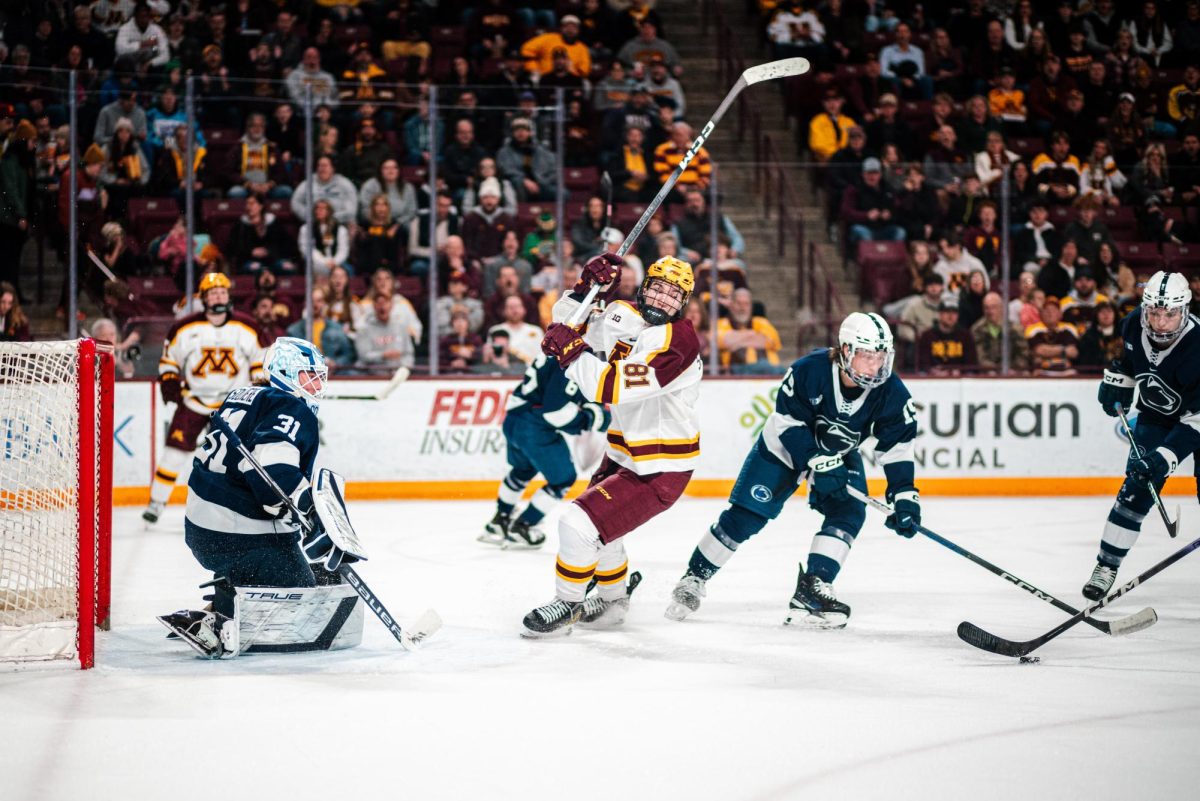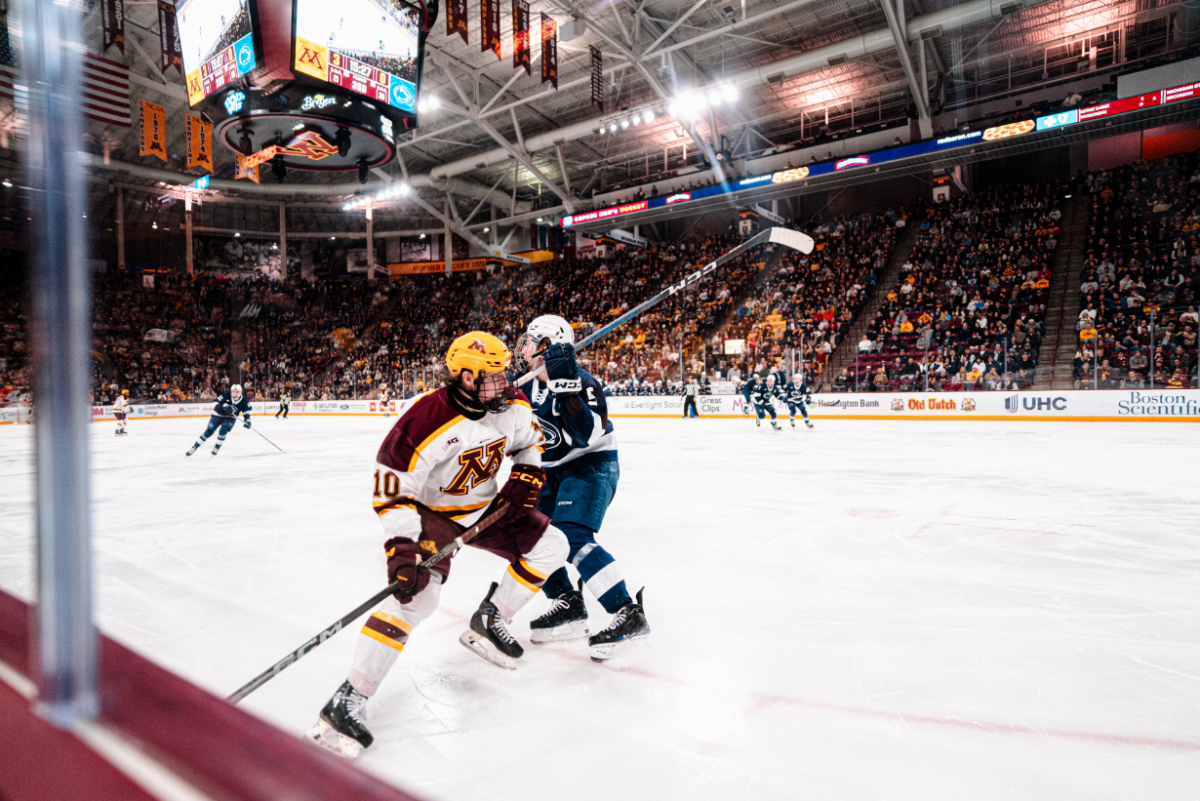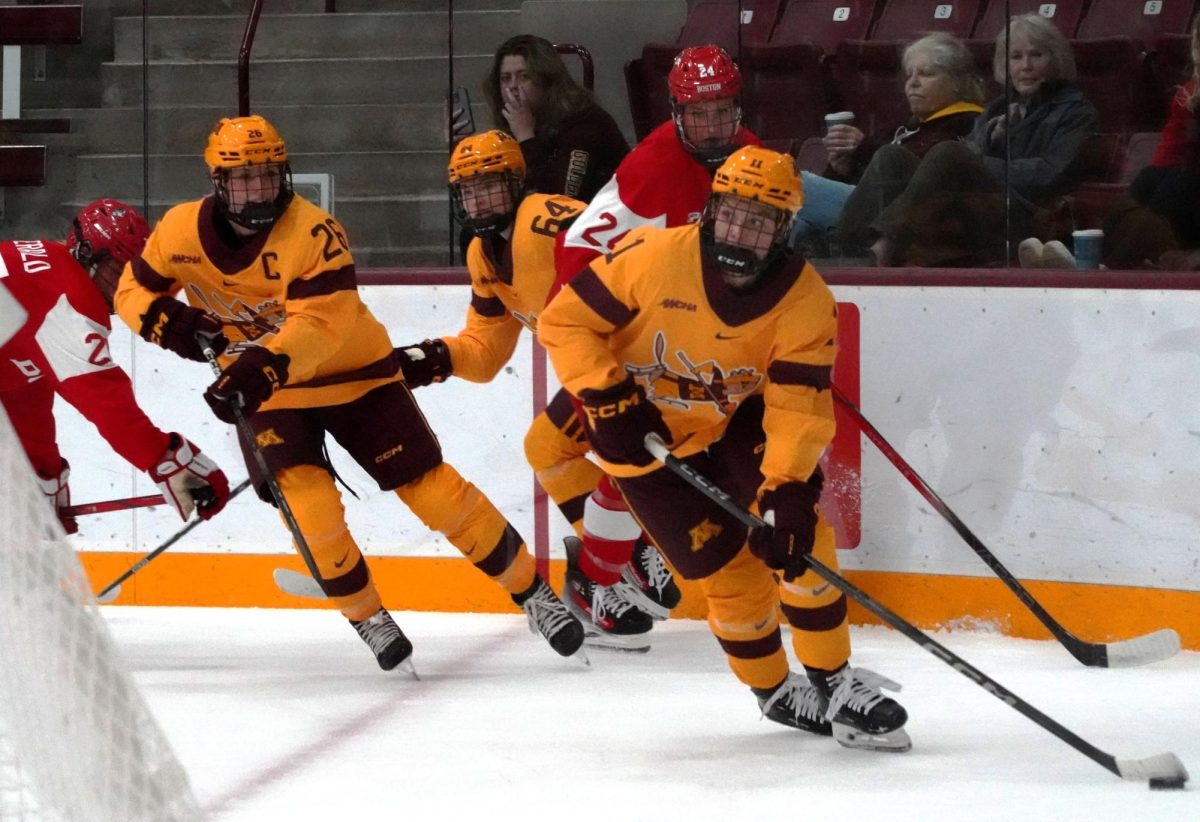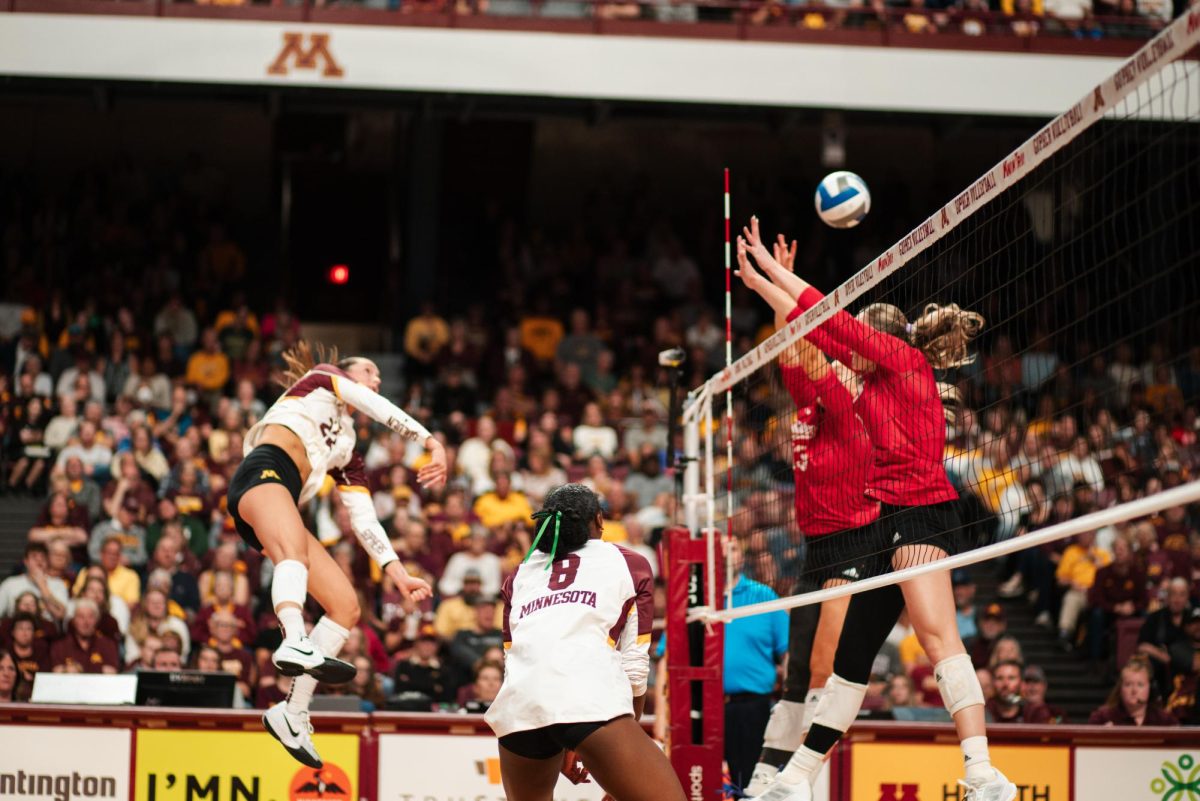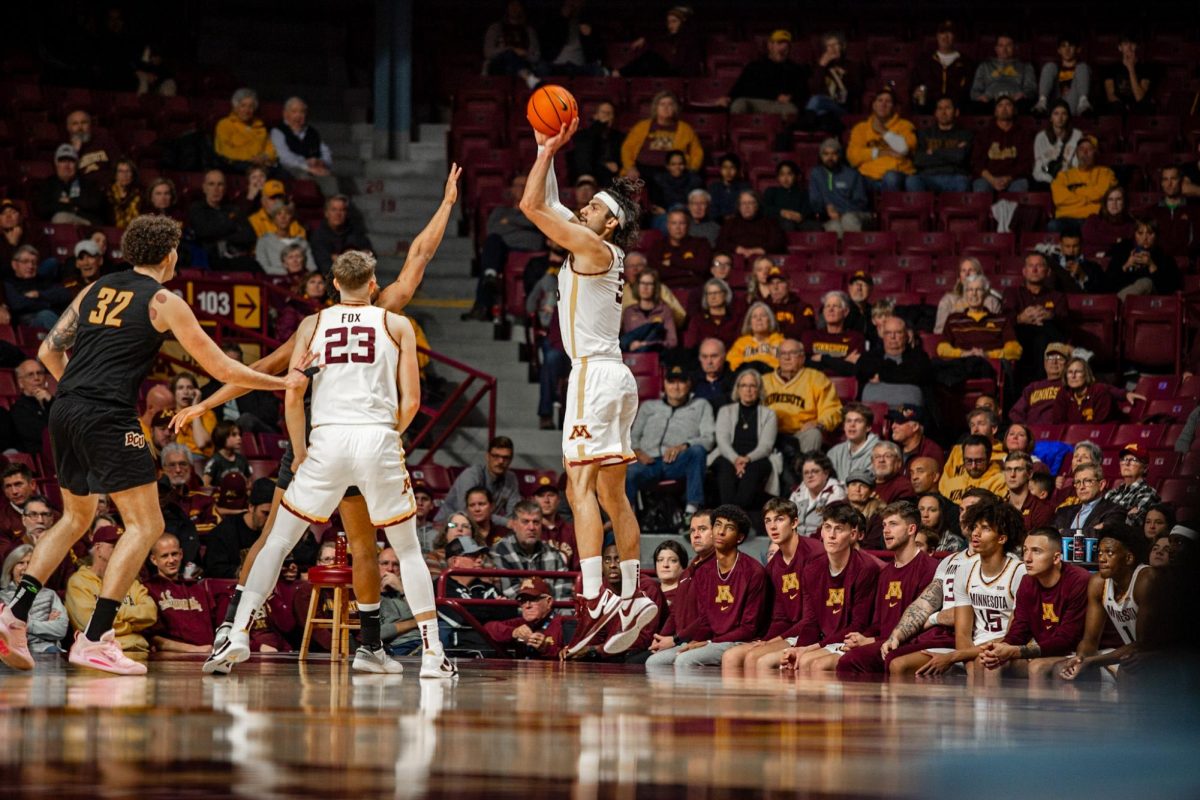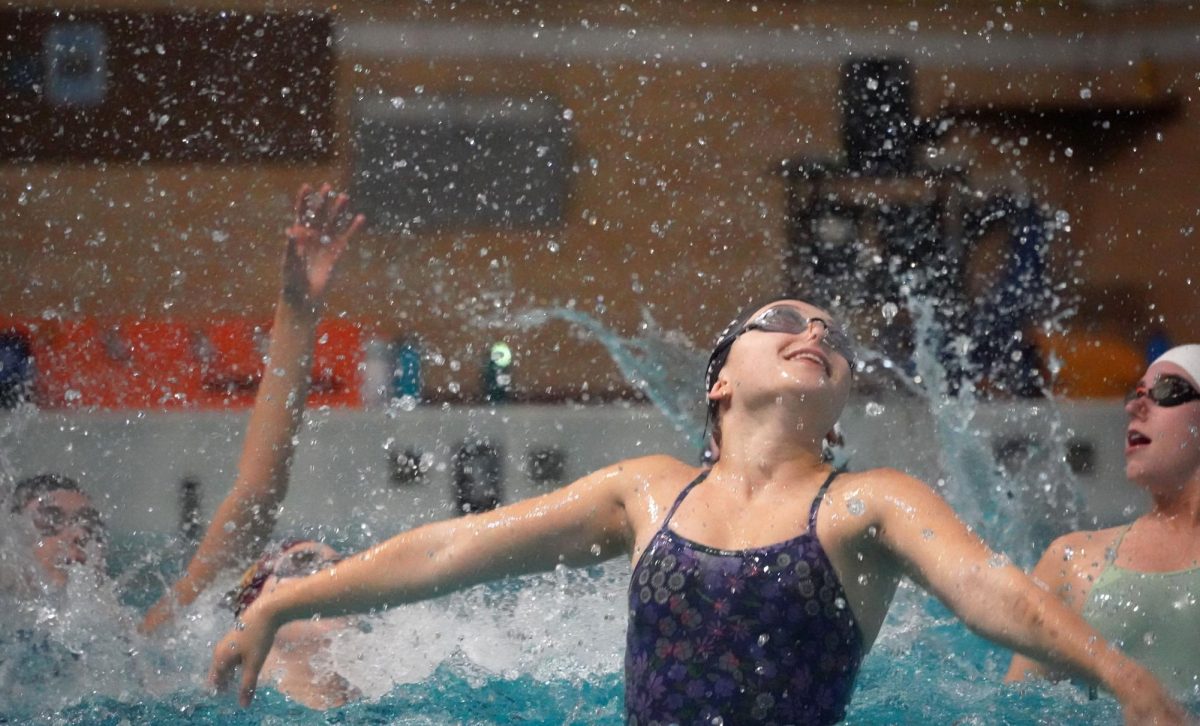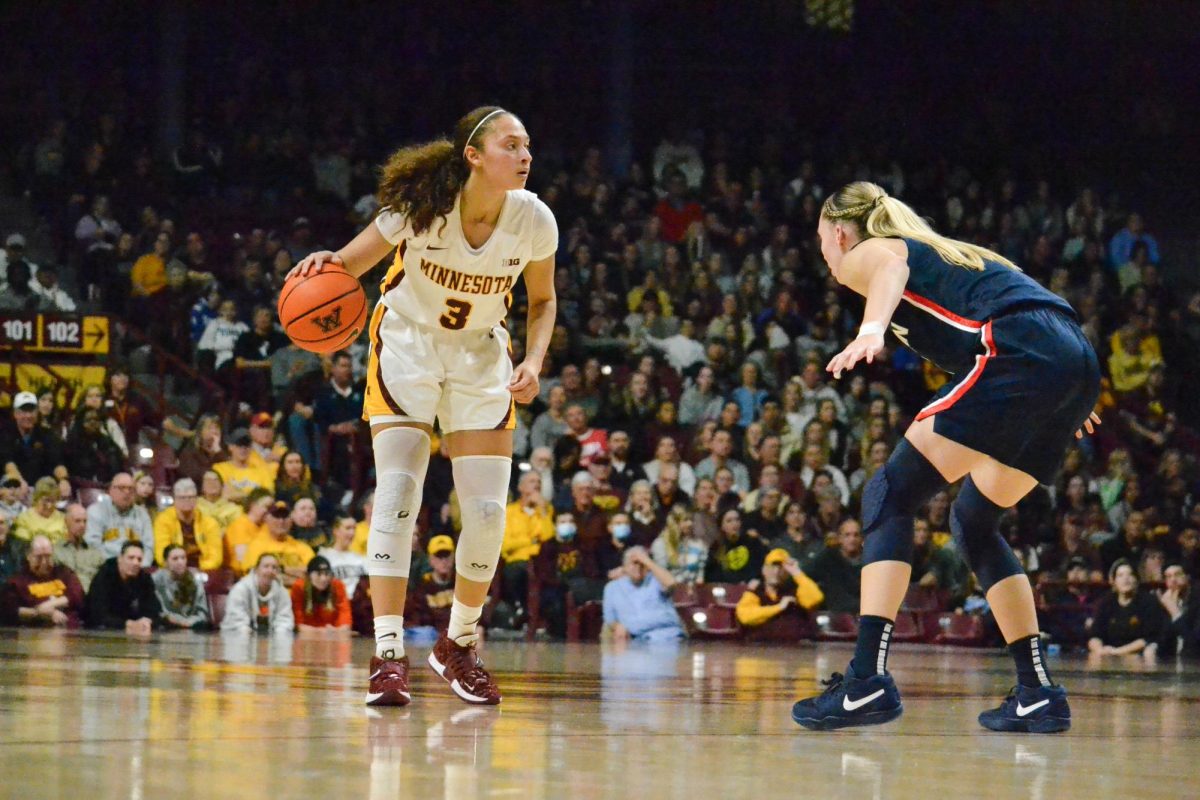Gophers men’s hockey swept the Penn State Nittany Lions at 3M Arena at Mariucci without allowing a goal in both of their games last weekend.
Minnesota claimed both wins with a score of 3-0, scoring six goals on 60 shots. They average approximately 34 shots on goal per game, which ranks fifth out of the seven teams in the Big Ten conference.
Penn State leads the entire NCAA in shots on goal and averages over 39 shots per game but scores on 8.5% of their shots, ranking 53rd out of 64 teams.
Before the Penn State series, Gophers assistant coach Ben Gordon said shots on goal can be a misleading statistic but can also depict a team’s performance accurately. He used Penn State as an example, explaining how their frequent shooting can make their performance seem better.
“It could be an even game, but they’re a high-volume shot team,” Gordon said.
Shooting efficiency, known as shooting percentage, measures a team’s ability to convert shots into goals. Shooting percentage is calculated by dividing a team’s goals scored by shots on goal.
Minnesota’s recent series against the Nittany Lions showcased their smallest difference in shooting efficiency between both games of a series (2.02%) since their late October matchups against Wisconsin (1.88%).
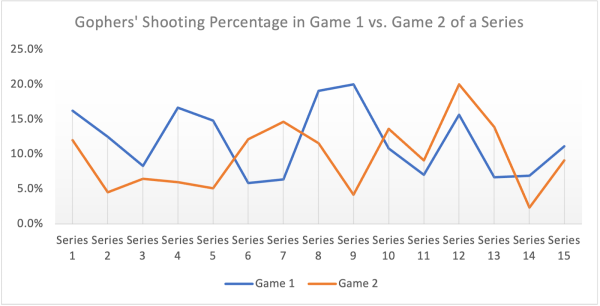
Minnesota had their greatest difference in shooting efficiency between series games, a near 16% difference, when they visited Ohio State in December. The Gophers scored on 20% of their shots in a 5-4 win on Dec. 8 but made 4% of their goals in the next game in a shootout loss.
Since that series, Minnesota has not had a difference in shooting efficiency greater than 8% between their first and second games of a series and has averaged a 4.5% difference so far in 2024. Across their nine series in 2023, the Gophers’ average scoring difference between games in a series was 8%.
The Gophers had their first series against Penn State in early December, winning the first game but losing the second.
Head coach Bob Motzko said in December the offense was one of the team’s issues in the first month of the season, but it had been quietly improving. He said the team has been more consistent since the start of November.
After their most recent series against Penn State, Motzko said the team’s struggle with injuries prevented them from establishing traction in their game.
“Our guys fought through it,” Motzko said. “It was kind of amazing, the more healthy we got, the more continuity we got and then also we had guys that stepped into bigger roles.”
The Gophers head into their final regular season away series against Notre Dame this weekend. In their November series against Notre Dame, Minnesota lost the first game but won the second game.
Differences between shooting percentages in both games in a series are trending downward. Minnesota’s average shooting percentage difference in 2024 (4.53%) is lower than that of 2023 (8.03%), meaning they are having more consistent shooting between games on a series-to-series basis.
In their four series in November, the Gophers won one game in each series and averaged a 9% shooting efficiency between the two games in each series. Notre Dame was the only team to defeat Minnesota during that span as Minnesota Duluth, Michigan and Michigan State all claimed one game in a shootout.
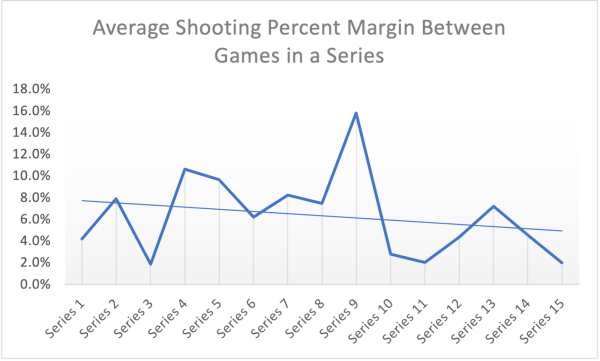
Sophomore forward Jimmy Snuggerud had 40 shots on goal through eight games in November and scored three goals.
Gordon called Snuggerud a “shot-first guy.” Snuggerud leads the team in shots on goal with 150 and averages five shots on goal per game.
“His shot is his best attribute,” Gordon said.
While Snuggerud leads the team in goals and shoots at a high volume, he does not have the highest shooting percentage on the team. Sophomore forward Brody Lamb leads the team, scoring 22.4% of his 49 shots on goal.
Lamb said he likes looking for open lanes to avoid having his shots blocked and even looking to shoot through a defending player’s sticks.
“I like coming downhill on my forehand side the best,” Lamb said. “I feel the most comfortable releasing it that way.”
Lamb did not score in the Penn State series, but he had an assist on Aaron Huglen’s first goal and five shots on goal over the weekend.
Huglen said he is continually developing a more consistent offense after the Penn State series.
“I think that’s a big step that I needed to take as a player,” Huglen said.


